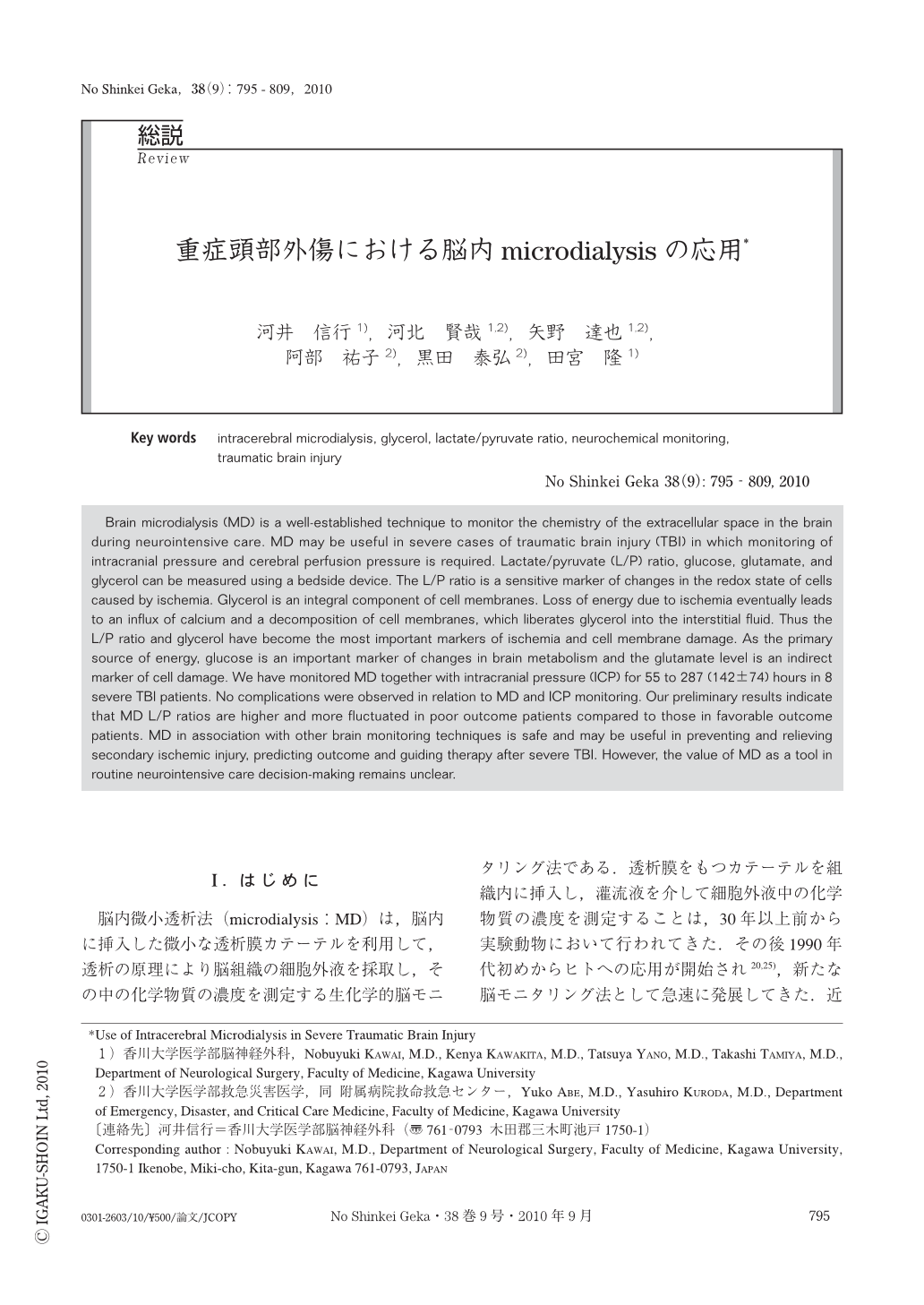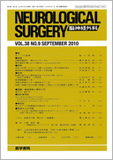Japanese
English
- 有料閲覧
- Abstract 文献概要
- 1ページ目 Look Inside
- 参考文献 Reference
Ⅰ.は じ め に
脳内微小透析法(microdialysis:MD)は,脳内に挿入した微小な透析膜カテーテルを利用して,透析の原理により脳組織の細胞外液を採取し,その中の化学物質の濃度を測定する生化学的脳モニタリング法である.透析膜をもつカテーテルを組織内に挿入し,灌流液を介して細胞外液中の化学物質の濃度を測定することは,30年以上前から実験動物において行われてきた.その後1990年代初めからヒトへの応用が開始され20,25),新たな脳モニタリング法として急速に発展してきた.近年,簡便な装置の開発と膜素材の改良などにより,合併症を起こさず安全に長期間のカテーテル留置が可能となった.MDにより損傷を受けつつある脳組織の代謝変化を連続的にモニタリングすることで,二次的脳損傷メカニズムの解明,治療法の選択や治療開始時期の決定,治療効果の判定などがベッドサイドで可能である.
近年,ヒト用のMDカテーテルが本邦でも薬事承認され,神経集中治療領域における臨床応用が開始されている.本稿では,MDの基本的な原理と頭部外傷におけるMDの役割を最近の報告を基に解説し,またわれわれの初期の経験を報告する.
Brain microdialysis (MD) is a well-established technique to monitor the chemistry of the extracellular space in the brain during neurointensive care. MD may be useful in severe cases of traumatic brain injury (TBI) in which monitoring of intracranial pressure and cerebral perfusion pressure is required. Lactate/pyruvate (L/P) ratio, glucose, glutamate, and glycerol can be measured using a bedside device. The L/P ratio is a sensitive marker of changes in the redox state of cells caused by ischemia. Glycerol is an integral component of cell membranes. Loss of energy due to ischemia eventually leads to an influx of calcium and a decomposition of cell membranes, which liberates glycerol into the interstitial fluid. Thus the L/P ratio and glycerol have become the most important markers of ischemia and cell membrane damage. As the primary source of energy, glucose is an important marker of changes in brain metabolism and the glutamate level is an indirect marker of cell damage. We have monitored MD together with intracranial pressure (ICP) for 55 to 287 (142±74) hours in 8 severe TBI patients. No complications were observed in relation to MD and ICP monitoring. Our preliminary results indicate that MD L/P ratios are higher and more fluctuated in poor outcome patients compared to those in favorable outcome patients. MD in association with other brain monitoring techniques is safe and may be useful in preventing and relieving secondary ischemic injury, predicting outcome and guiding therapy after severe TBI. However, the value of MD as a tool in routine neurointensive care decision-making remains unclear.

Copyright © 2010, Igaku-Shoin Ltd. All rights reserved.


